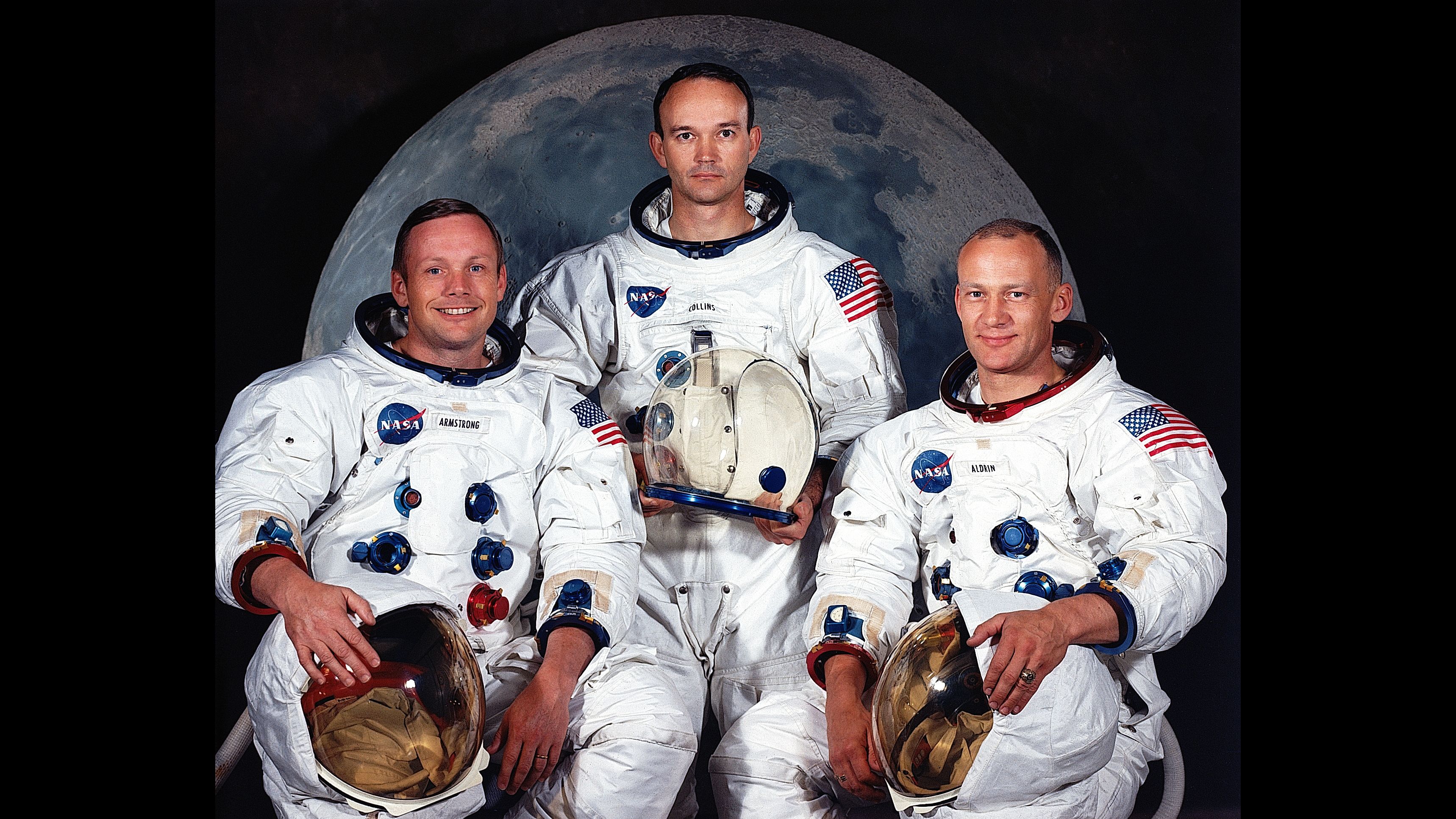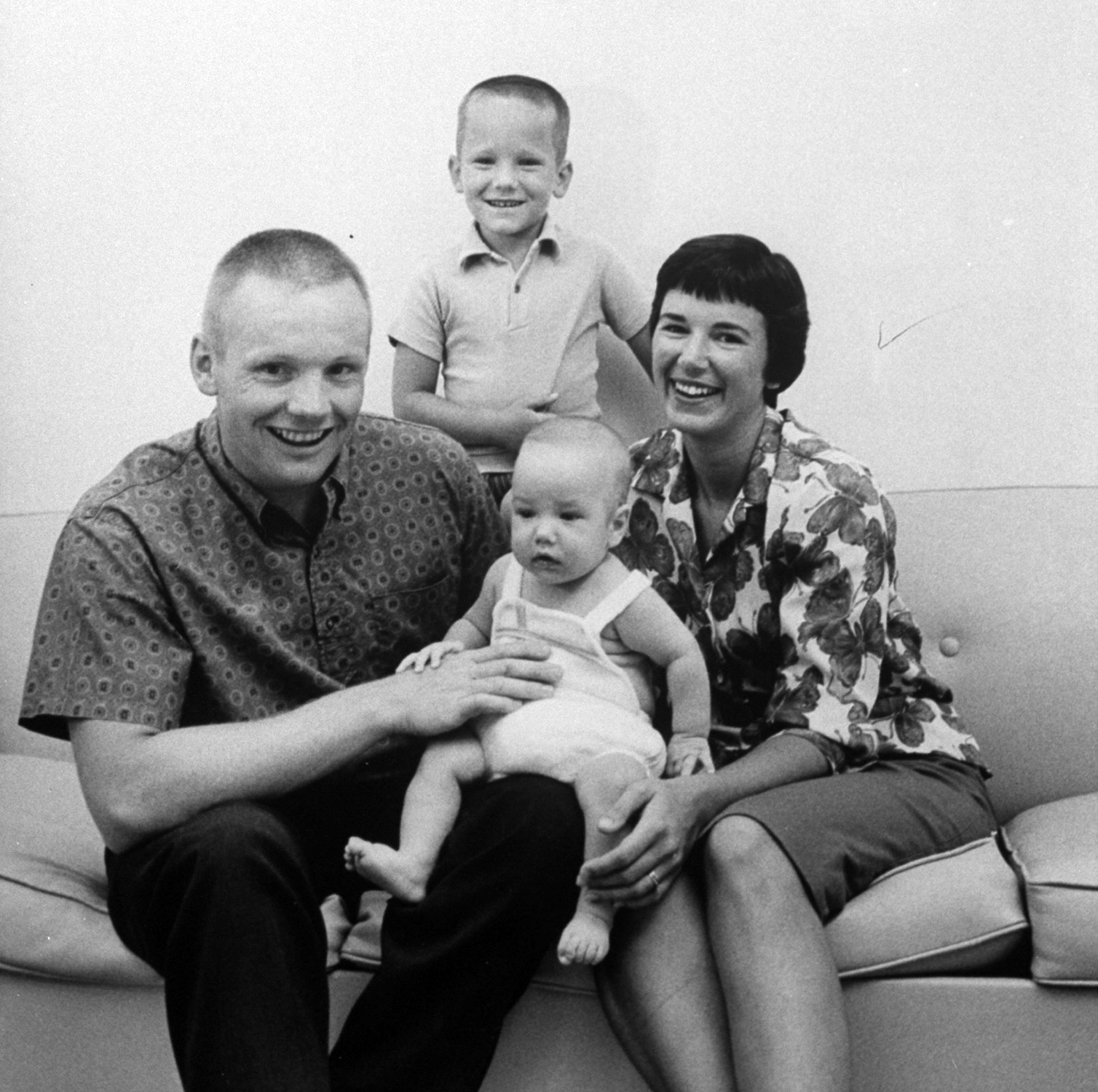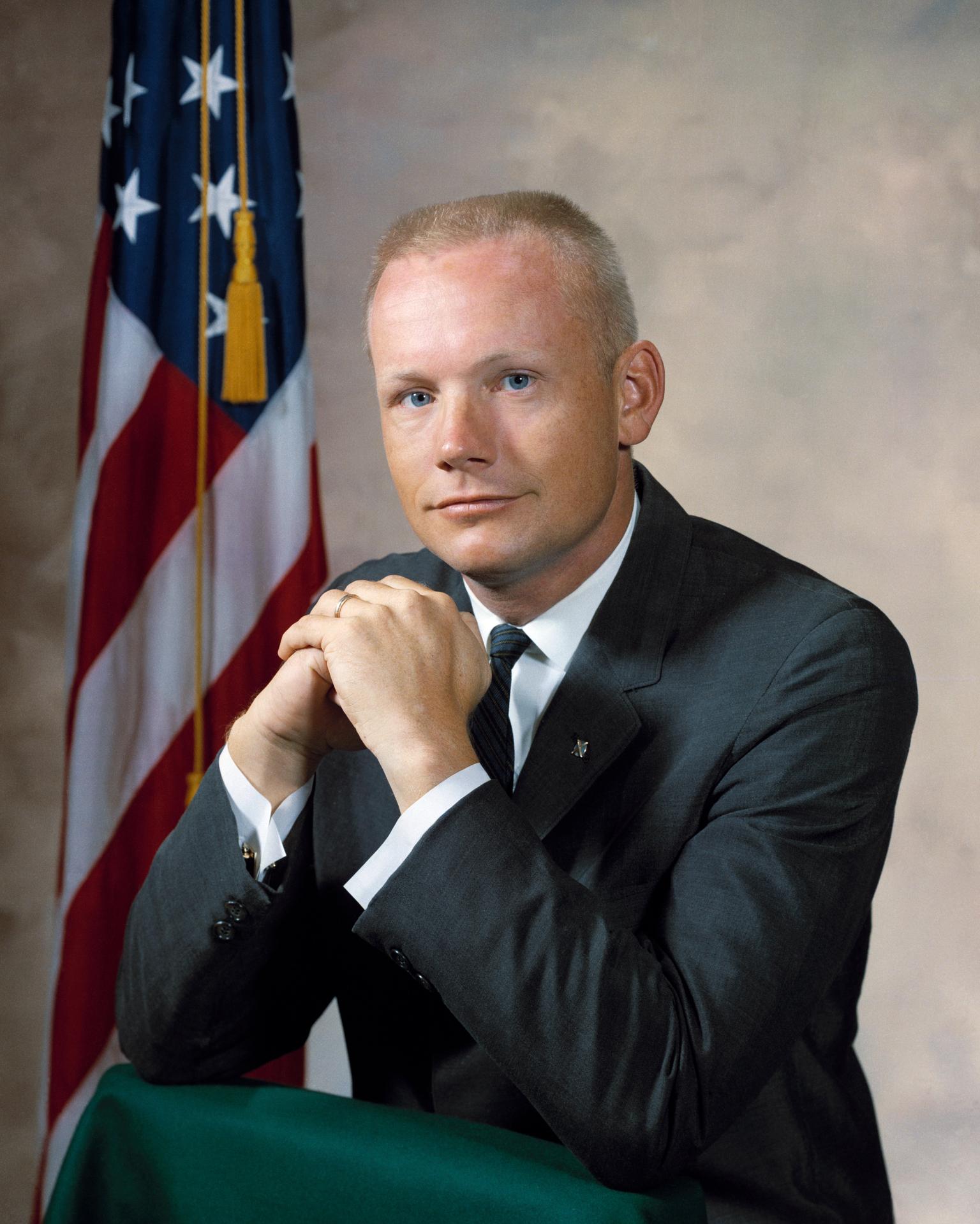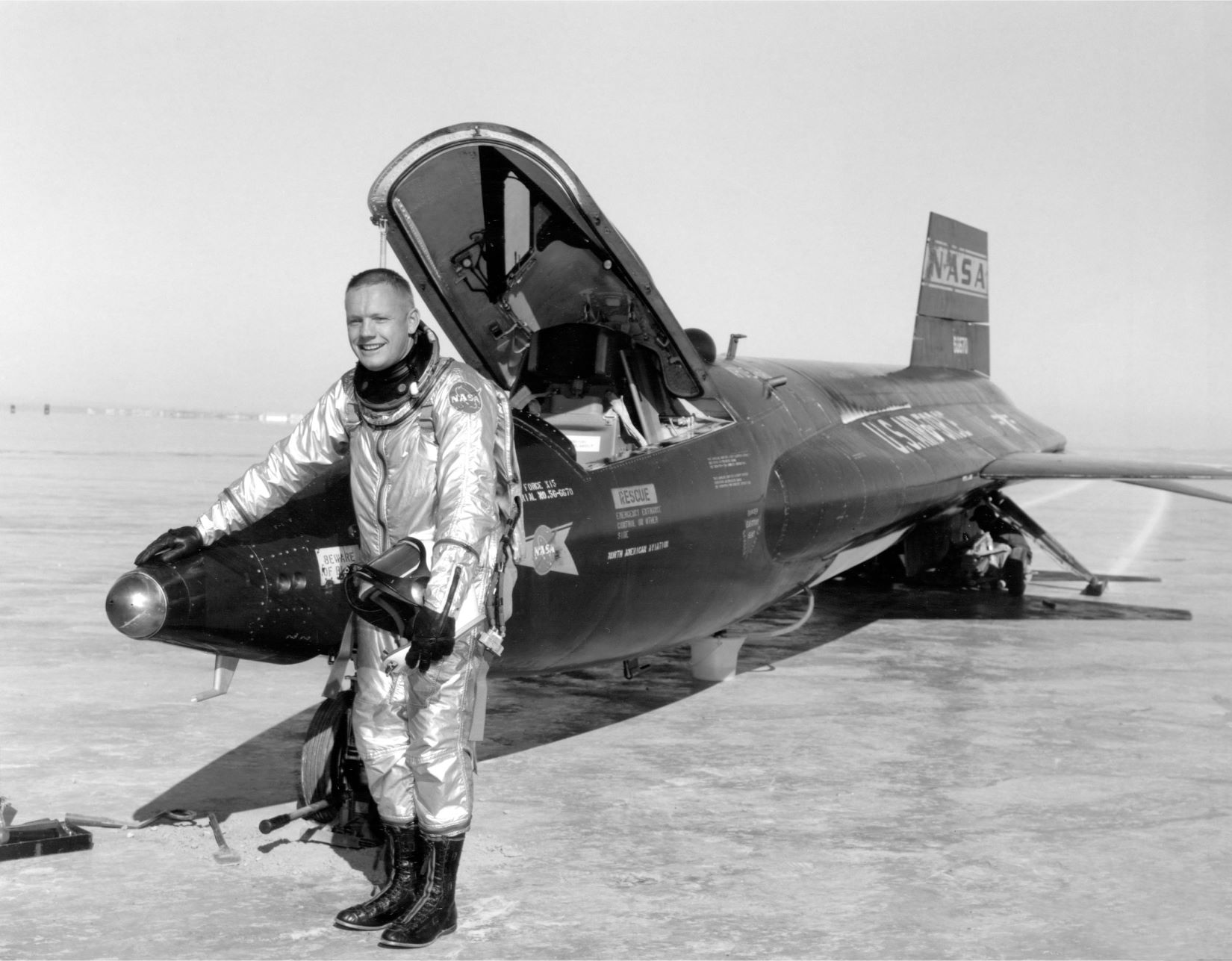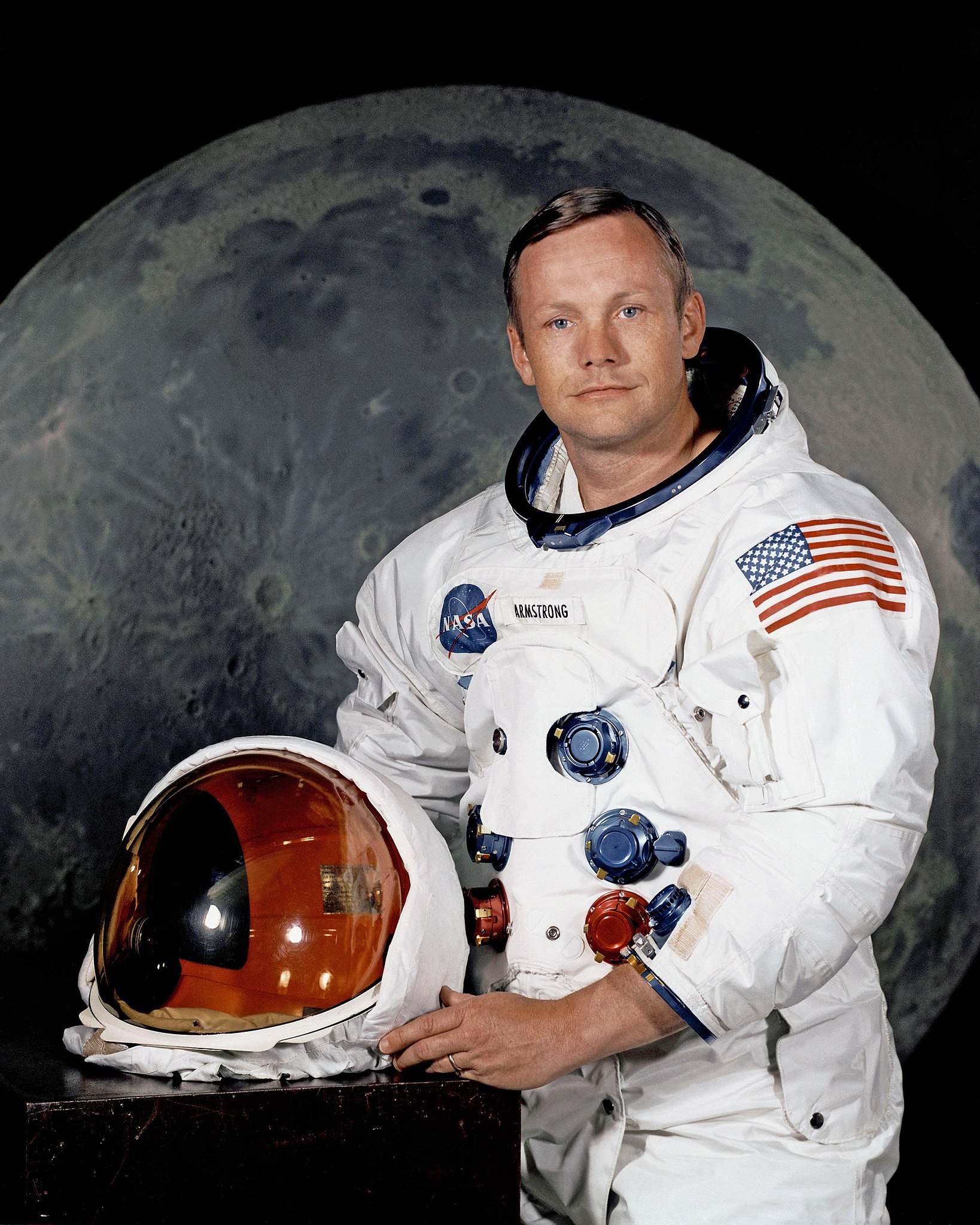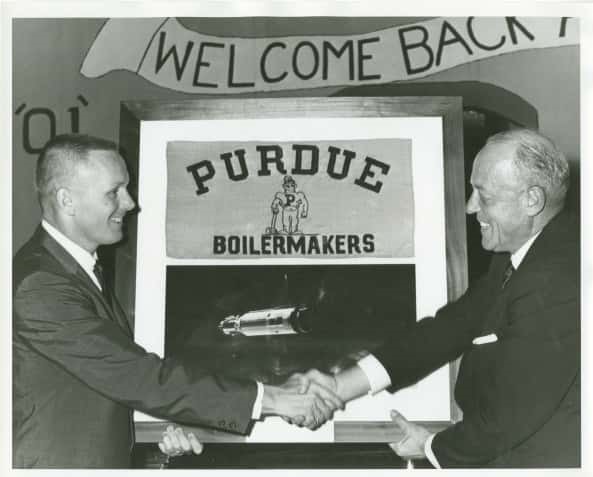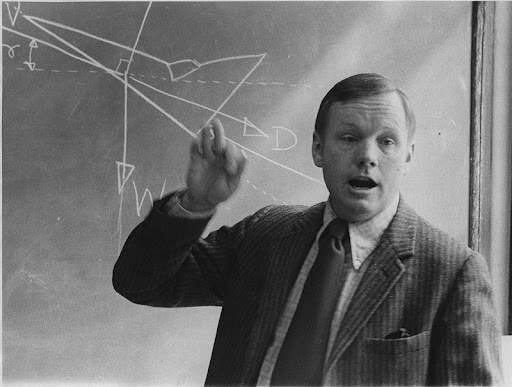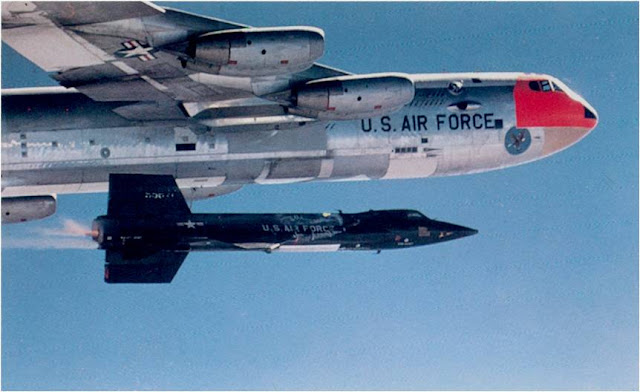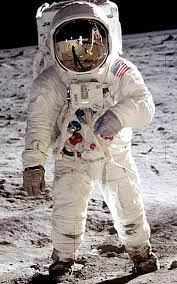PERSONAL
Born on August 5, 1930, in Wapakoneta, Ohio. Married. Two sons. Died on August 25, 2012. Armstrong received a Bachelor of Science in Aeronautical Engineering from Purdue University and a Master of Science in Aerospace Engineering from the University of Southern California. He held honorary doctorates from multiple universities. Armstrong was a Fellow of the Society of Experimental Test Pilots and the Royal Aeronautical Society and an Honorary Fellow of the American Institute of Aeronautics and Astronautics and the International Astronautics Federation.
HONORS
Armstrong was a Fellow of the Society of Experimental Test Pilots and the Royal Aeronautical Society and an Honorary Fellow of the American Institute of Aeronautics and Astronautics and the International Astronautics Federation. Armstrong was a member of the National Academy of Engineering and the Academy of the Kingdom of Morocco. He served as a member of the National Commission on Space (1985 to 1986), as Vice-Chairman of the Presidential Commission on the Space Shuttle Challenger Accident (1986) and as Chairman of the Presidential Advisory Committee for the Peace Corps (1971 to 1973). Armstrong was decorated by 17 countries. He was the recipient of many special honors, including the Presidential Medal of Freedom, the Congressional Gold Medal, the Congressional Space Medal of Honor, the Explorers Club Medal, the Robert H. Goddard Memorial Trophy, the NASA Distinguished Service Medal, the Harmon International Aviation Trophy, the Royal Geographic Society's Gold Medal, the Federation Aeronautique Internationale's Gold Space Medal, the American Astronautical Society Flight Achievement Award, the Robert J. Collier Trophy, the American Institute of Aeronautics and Astronautics (AIAA) Astronautics Award, the Octave Chanute Award and the John J. Montgomery Award.
EXPERIENCE
After serving as a naval aviator from 1949 to 1952, Armstrong joined the National Advisory Committee for Aeronautics (NACA) in 1955. His first assignment was with the NACA Lewis Research Center (now NASA Glenn Research Center) in Cleveland. Over the next 17 years, he was an engineer, test pilot, astronaut and administrator for NACA and its successor agency, NASA. He was Professor of Aerospace Engineering at the University of Cincinnati between 1971 and 1979. During the years 1982 to 1992, Armstrong was chairman of Computing Technologies for Aviation, Inc., Charlottesville, Virginia.
NASA CAREER
As a research pilot at NASA’s Flight Research Center, Edwards, California, Armstrong was a project pilot on many pioneering high-speed aircraft, including the well known, 4000-mph X-15. He flew more than 200 different models of aircraft, including jets, rockets, helicopters and gliders. Armstrong transferred to astronaut status in 1962. He was assigned as command pilot for the Gemini 8 mission. Gemini 8 was launched on March 16, 1966, and Armstrong performed the first successful docking of two vehicles in space. As spacecraft commander for Apollo 11, the first manned lunar landing mission, Armstrong gained the distinction of being the first man to land a craft on the moon and first to step on its surface. Armstrong subsequently held the position of Deputy Associate Administrator for Aeronautics, NASA Headquarters, Washington, D.C. In this position, he was responsible for the coordination and management of overall NASA research and technology work related to aeronautics. He resigned from NASA in 1971.
